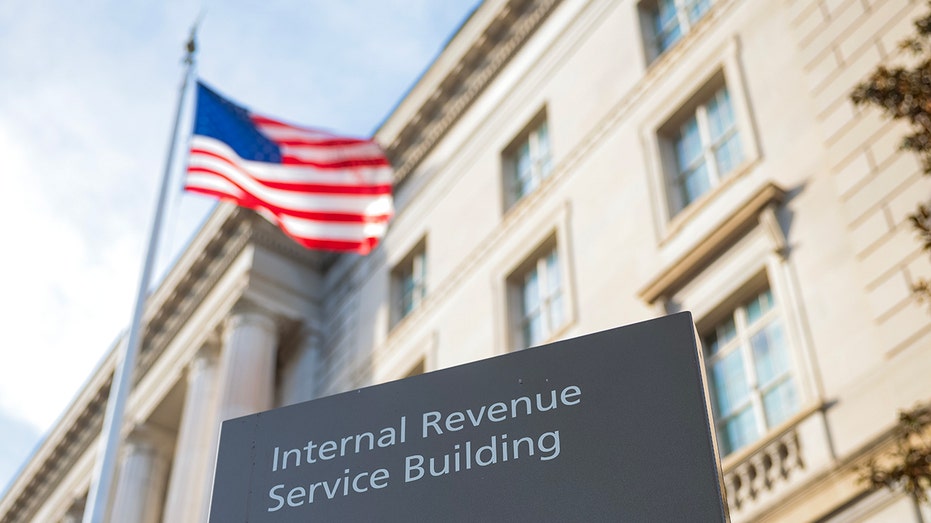The Internal Revenue Service (IRS) on Thursday announced annual inflation adjustments for dozens of tax provisions, along with changes made under the One Big Beautiful Bill Act (OBBBA).
The IRS’ announced changes primarily apply to tax year 2026.
The standard deduction, claimed by the majority of taxpayers who don’t itemize their returns, will rise to $16,100 for single taxpayers and $32,200 for married couples filing jointly in tax year 2026. OBBBA also raised the standard deduction for the 2025 tax year to $15,750 for single filers and $31,500 for couples filing jointly.
Adjustments were made to the IRS’ marginal tax brackets, with the income thresholds that apply to various tax rates updated to account for inflation.
BLUE STATES PLAN NEW TAX HIKES ON WEALTHY RESIDENTS IN RESPONSE TO TRUMP’S FEDERAL TAX LEGISLATION
The top tax rate remains at 37% for the 2026 tax year and applies to single taxpayers with incomes over $640,600 or married joint filers earning over $768,700. The other tax brackets and rates apply as follows:
- 35% for incomes over $256,225 for individuals and $512,450 for married filers;
- 32% for incomes over $201,775 for individuals and $403,550 for married filers;
- 24% for incomes over $105,700 for individuals and $211,400 for married filers;
- 22% for incomes over $50,400 for individuals and $100,800 for married filers;
- 12% for incomes over $12,400 for individuals and $24,800 for married filers;
- 10% for incomes of $12,400 or less for individuals or $24,800 for married filers.
Other notable changes made under the OBBBA include the estate tax exclusion, which will be set at $15 million for the estates of decedents who die in 2026. That’s an increase from the $13.99 million exclusion that applies in 2025.
Adoption credits will increase to $17,670 in tax year 2026, up from $17,280 in 2025, while the amount of the credit that’s refundable will be $5,120.
The exemption amount for the alternative minimum tax will be set at $90,100 and begin to phase out at $500,000 for individuals, or for married couples at $140,200 with a phase out starting at $1 million.
SOCIAL SECURITY COMMISSIONER FRANK BISIGNANO NAMED IRS CEO

Additionally, the OBBBA increased the maximum amount of the employer-provided childcare tax credit from $150,000 to $500,000 (or $600,000 if the employer is an eligible small business).
Other tax provisions that are changing due to the annual indexing process include the earned income tax credit, which will rise to a maximum credit amount of $8,231 for qualifying taxpayers with three or more children, an increase from $8,046 in tax year 2025.
The limitation for voluntary employee salary reductions for contributions to health flexible spending arrangements will increase to $3,400 in tax year 2026, up $100 from last year. Cafeteria plans that allow unused amounts to carryover would have the maximum carryover at $680, up $20 from 2025.
HOW DOES THE ‘BIG, BEAUTIFUL BILL’ HELP MIDDLE-CLASS TAXPAYERS?

Taxpayers who have self-only coverage in a medical savings account would have to have a deductible of at least $2,900 in tax year 2026, up $50 from this year, but not more than $4,400, which is an increase of $100 from this year. The maximum out-of-pocket expense amount for self-only coverage will increase $150 to $5,850 in 2026.
For family coverage with medical savings accounts, the annual deductible will be between $5,850 to $8,750, while the out-of-pocket expense limit will be $10,700 in tax year 2026.
The monthly limitation for the qualified transportation fringe benefit will rise $15 to $340 in tax year 2026.
The annual exclusion for gifts will be unchanged for tax year 2026 at $19,000.
Some tax provisions that in the past were indexed for inflation are no longer adjusted. Those include personal exemptions, itemized deductions, and the income measurement used to phase out the lifetime learning credit.
Read the full article here
















